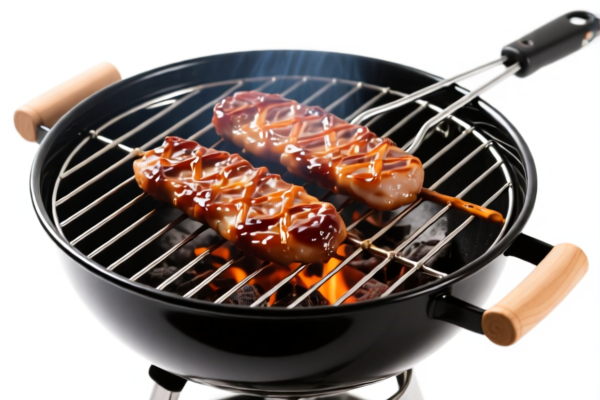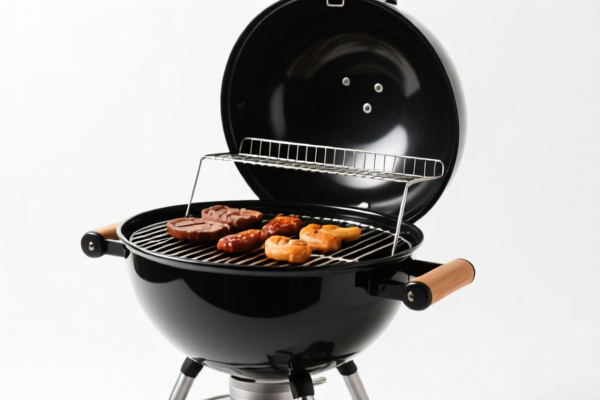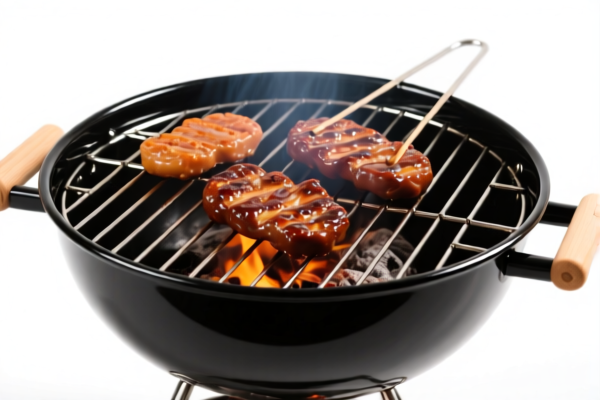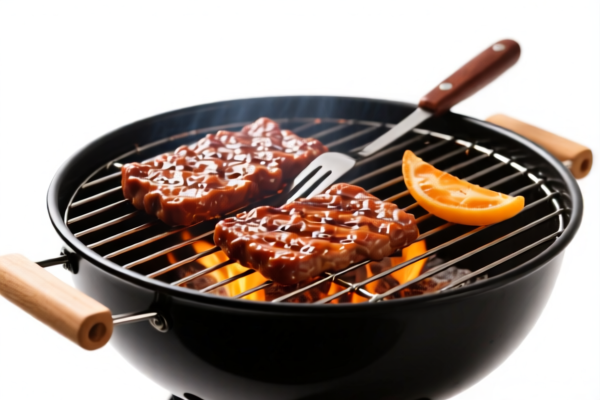| HS Code | Official Doc | Tariff Rate | Origin | Destination | Effective Date |
|---|---|---|---|---|---|
| 8416100000 | Doc | 37.5% | CN | US | 2025-05-12 |
| 8416300000 | Doc | 55.0% | CN | US | 2025-05-12 |
| 8479899599 | Doc | 57.5% | CN | US | 2025-05-12 |
| 8479899599 | Doc | 57.5% | CN | US | 2025-05-12 |
| 8545904000 | Doc | 55.0% | CN | US | 2025-05-12 |
| 8545194000 | Doc | 55.0% | CN | US | 2025-05-12 |




Barbecue Machine
A barbecue machine, also commonly known as a grill, is a cooking appliance used for applying heat to food, typically from below, to cook it via direct or indirect heat, often over a fire, charcoal, or gas. They are primarily employed for cooking meats, vegetables, and other foods outdoors, though indoor models exist.
Materials
Barbecue machines utilize a variety of materials in their construction:
- Stainless Steel: A common material for cooking grates, burners, and exterior components due to its durability, resistance to corrosion, and ease of cleaning.
- Cast Iron: Frequently used for cooking grates due to its excellent heat retention and ability to create sear marks. Requires seasoning to prevent rust.
- Porcelain-Coated Cast Iron: Offers the benefits of cast iron with added rust resistance and easier cleaning.
- Aluminum: Used for components like drip pans and some exterior parts due to its lightweight nature and heat conductivity.
- Carbon Steel: Found in some grates and components, offering a balance of heat retention and affordability.
- Plastic/Composite: Utilized for handles, side shelves, and other non-heat-exposed parts.
Purpose & Function
The primary purpose of a barbecue machine is to cook food using high heat. The function is achieved through:
- Direct Heat: Food is cooked directly over the heat source, resulting in rapid cooking and characteristic grill marks. Suitable for thinner cuts of meat and vegetables.
- Indirect Heat: Food is cooked beside the heat source, utilizing convection heat. Ideal for larger cuts of meat that require slower, more even cooking.
- Smoke Infusion: Many barbecue machines, particularly charcoal and wood-fired models, allow for the addition of wood chips or chunks to impart smoky flavors to the food.
- Temperature Control: Machines often feature adjustable burners, vents, or dampers to regulate the cooking temperature.
Usage Scenarios
- Outdoor Cooking: The most common application, used for backyard barbecues, camping, tailgating, and other outdoor events.
- Residential Use: Grills are widely used in private homes for recreational cooking.
- Commercial Use: Restaurants, catering services, and food vendors utilize larger, more robust grills for high-volume cooking.
- Specialty Cooking: Some grills are designed for specific cooking methods like smoking, rotisserie, or pizza making.
Common Types
- Charcoal Grills: Utilize charcoal briquettes or lump charcoal as the heat source. Known for imparting a distinct smoky flavor. Require more skill and effort to manage temperature.
- Kettle Grills: A classic design with a rounded bowl shape.
- Barrel Grills: Larger, drum-shaped grills often used for smoking.
- Gas Grills: Utilize propane or natural gas as the heat source. Offer convenient temperature control and quick start-up.
- Propane Grills: Portable and widely available.
- Natural Gas Grills: Require a gas line connection and offer continuous fuel supply.
- Electric Grills: Utilize electricity as the heat source. Convenient for indoor use and offer precise temperature control.
- Pellet Grills: Utilize wood pellets as the heat source. Combine the convenience of gas grills with the smoky flavor of wood-fired grills.
- Smokers: Designed specifically for slow cooking and imparting smoky flavors.
- Kamado Grills: Ceramic grills known for their excellent heat retention and versatility.
- Portable Grills: Compact and lightweight grills designed for travel and camping.
Based on the provided information, classifying “barbecue machine” requires careful consideration of its components and function. Here’s a breakdown of potentially relevant HS codes:
- 8416100000: Furnace burners for liquid fuel. This code applies to burners specifically designed for liquid fuel, which could be relevant if the barbecue machine utilizes liquid propane or other liquid fuels. The total tax rate is 37.5% (0.0% base tariff, 7.5% additional tariff, increasing to 30.0% after April 2, 2025).
- 8416300000: Mechanical stokers, including their mechanical grates, mechanical ash dischargers and similar appliances. If the barbecue machine incorporates automated fuel feeding or ash removal mechanisms, this code might apply. The total tax rate is 55.0% (0.0% base tariff, 25.0% additional tariff, increasing to 30.0% after April 2, 2025).
- 8479899599: Other machines and mechanical appliances. This is a broad category for machines not specifically classified elsewhere. If the barbecue machine doesn’t fall into the more specific categories above, this code is likely applicable. The total tax rate is 57.5% (2.5% base tariff, 0.0% additional tariff, increasing to 30.0% after April 2, 2025, with a 25% additional tariff for steel or aluminum products).
According to the provided reference material, the HS code options related to 'barbecue machine' are limited, with only the following 3 found.
Regarding HS code 8479899599, please note that if the barbecue machine is made of steel or aluminum, an additional 25% tariff will apply after April 2, 2025.
Customer Reviews
No reviews yet.